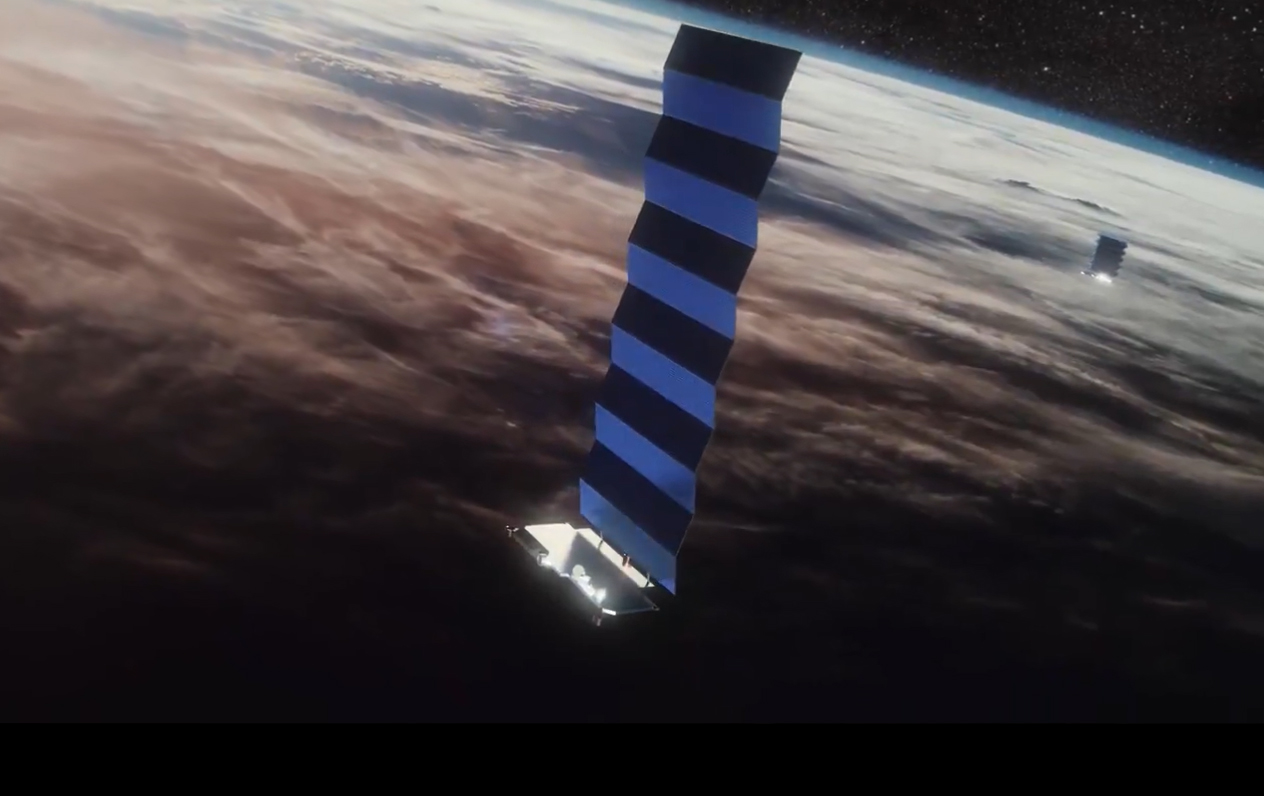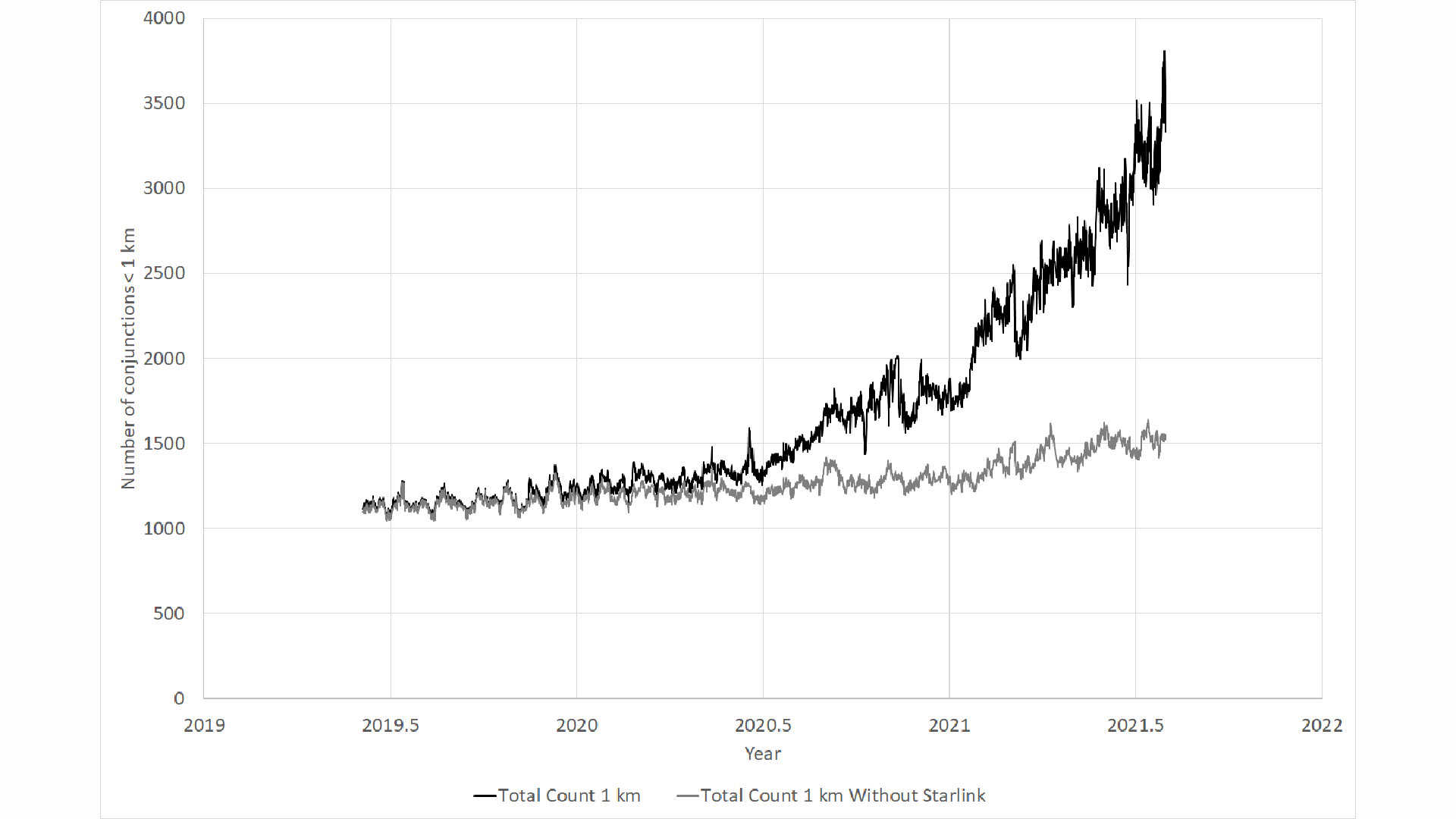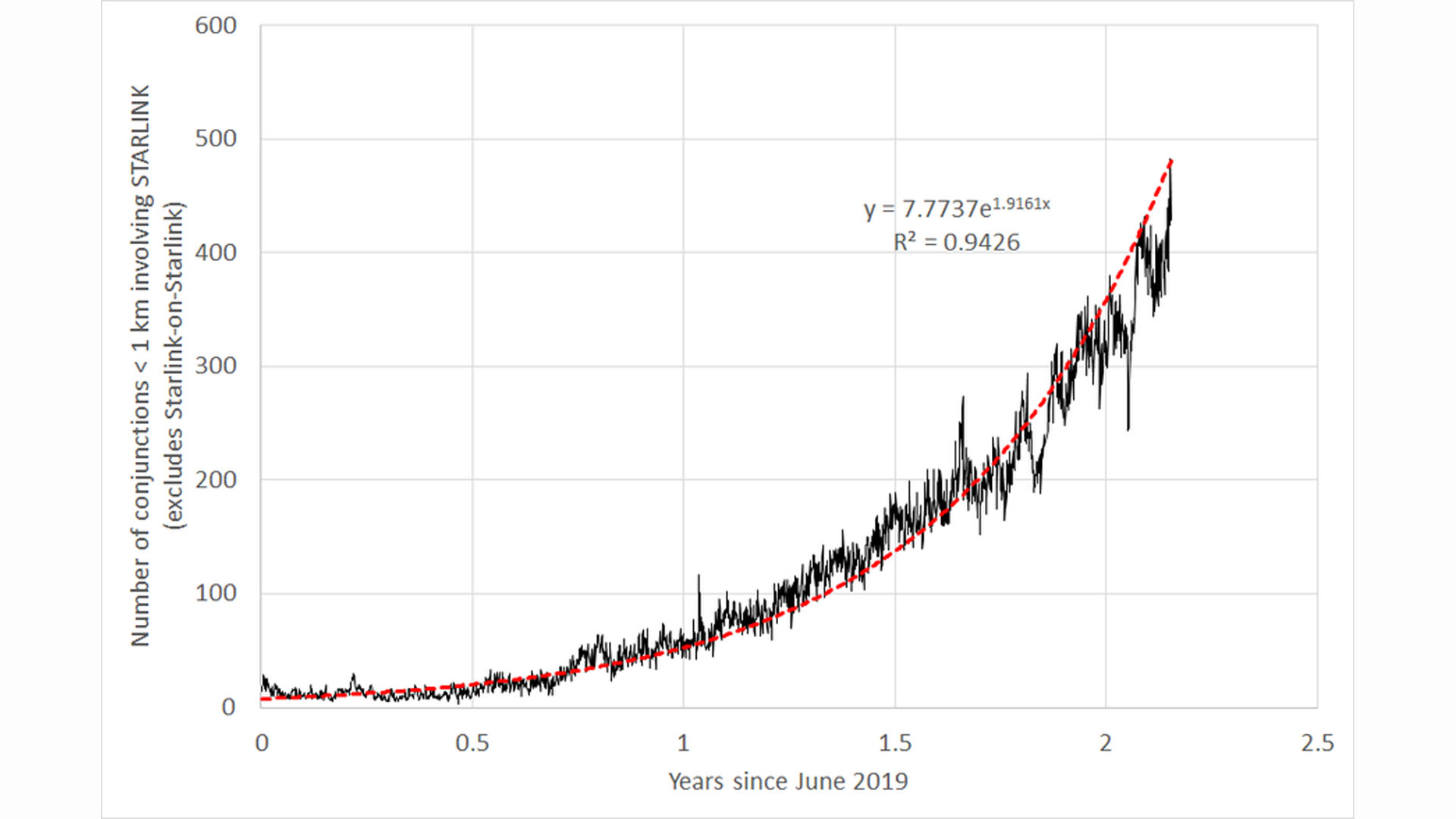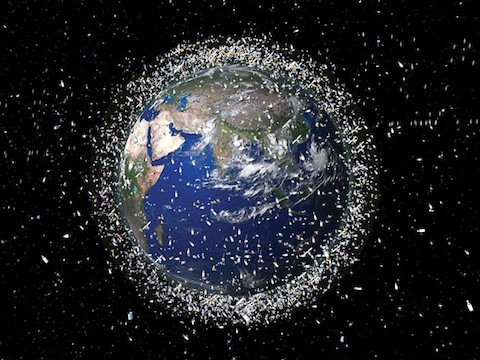SpaceX Starlink satellites responsible for over half of close encounters in orbit, scientist says
Starlink satellites might soon be involved in 90% of close encounters between two spacecraft in low Earth orbit.

Operators of satellite constellations are constantly forced to move their satellites because of encounters with other spacecraft and pieces of space junk. And, thanks to SpaceX's Starlink satellites, the number of such dangerous approaches will continue to grow, according to estimates based on available data.
SpaceX's Starlink satellites alone are involved in about 1,600 close encounters between two spacecraft every week, that's about 50 % of all such incidents, according to Hugh Lewis, the head of the Astronautics Research Group at the University of Southampton, U.K. These encounters include situations when two spacecraft pass within a distance of 0.6 miles (1 kilometer) from each other.
Lewis, Europe's leading expert on space debris, makes regular estimates of the situation in orbit based on data from the Socrates (Satellite Orbital Conjunction Reports Assessing Threatening Encounters in Space ) database. This tool, managed by Celestrack, provides information about satellite orbits and models their trajectories into the future to assess collision risk.
Space Junk Clean Up: 7 Wild Ways to Destroy Orbital Debris
Lewis publishes regular updates on Twitter and has seen a worrying trend in the data that reflects the fast deployment of the Starlink constellation.
"I have looked at the data going back to May 2019 when Starlink was first launched to understand the burden of these megaconstellations," Lewis told Space.com. "Since then, the number of encounters picked up by the Socrates database has more than doubled and now we are in a situation where Starlink accounts for half of all encounters."
The current 1,600 close passes include those between two Starlink satellites. Excluding these encounters, Starlink satellites approach other operators’ spacecraft 500 times every week.
Breaking space news, the latest updates on rocket launches, skywatching events and more!
Related: New spacecraft sustainability rating targets space junk

In comparison, Starlink's competitor OneWeb, currently flying over 250 satellites, is involved in 80 close passes with other operators' satellites every week, according to Lewis' data.
And the situation is bound to get worse. Only 1,700 satellites of an expected constellation of tens of thousands have been placed into orbit so far. Once SpaceX launches all 12,000 satellites of its first generation constellation, Starlink satellites will be involved in 90% of all close approaches, Lewis’ calculations suggest.

The risk of collision
Siemak Hesar, CEO and co-founder of Boulder, Colorado, based Kayhan Space, confirms the trend. His company, which develops a commercial autonomous space traffic management system, estimates that on average, an operator managing about 50 satellites will receive up to 300 official conjunction alerts a week. These alerts include encounters with other satellites as well as pieces of debris. Out of these 300 alerts, up to ten might require operators to perform avoidance maneuvers, Hesar told Space.com.
Kayhan Space bases their estimates on data provided by the U.S. Space Surveillance Network. This network of radars and telescopes, managed by the U.S. Space Force, closely monitors about 30,000 live and defunct satellites and pieces of debris down to the size of 4 inches (10 centimeters) and provides the most accurate location data of the orbiting objects.
The size of this catalog is expected to increase ten times in the near future, Hesar added, partly due to the growth of megaconstellations, such as Starlink, and partly as sensors improve and enable detection of even smaller objects. The more objects in the catalog mean more dangerously close encounters.
"This problem is really getting out of control," Hesar said. "The processes that are currently in place are very manual, not scalable, and there is not enough information sharing between parties that might be affected if a collision happens."
Hesar compared the problem to driving on a highway and not knowing that there has been an accident a few miles ahead of you. If two spacecraft collide in orbit, the cloud of debris the crash generates would threaten other satellites travelling through the same area.
"You want to have that situational awareness for the other actors that are flying in the neighbourhood," Hesar said.
Related: The worst space debris events of all time
Bad decisions
Despite the concerns, only three confirmed orbital collisions have happened so far. Earlier this week, astrophysicist and satellite tracker Jonathan McDowell, who's based at the Harvard-Smithsonian Center for Astrophysics in Cambridge, Massachusetts, found evidence in Space-Track data that the Chinese meteorological satellite Yunhai 1-02, which disintegrated in March this year, was actually hit by a piece of space debris.
The worst known space collision in history took place in February 2009 when the U.S. telecommunication satellite Iridium 33 and Russia's defunct military satellite Kosmos-2251 crashed at the altitude of 490 miles (789 kilometres). The incident spawned over 1,000 pieces of debris larger than 4 inches (10 cm). Many of these fragments were then involved in further orbital incidents.
Lewis is concerned that with the number of close passes growing, the risk of operators at some point making a wrong decision will grow as well. Avoidance maneuvers cost fuel, time and effort. Operators, therefore, always carefully evaluate such risks. A decision not to make an avoidance maneuver following an alert, such as that made by Iridium in 2009, could, however, clutter the orbital environment for years and decades.
"In a situation when you are receiving alerts on a daily basis, you can't maneuver for everything," Lewis said. "The maneuvers use propellant, the satellite cannot provide service. So there must be some threshold. But that means you are accepting a certain amount of risk. The problem is that at some point, you are likely to make a wrong decision."
Hesar said that uncertainties in the positions of satellites and pieces of debris are still considerable. In case of operational satellites, the error could be up to 330 feet (100 meters) large. When it comes to a piece of debris, the uncertainty about its exact position might be in the order of a mile or more.
"This object can be anywhere in this bubble of multiple kilometres," Hesar said. "At this point, and for the foreseeable future, avoidance is our best recourse. People that say 'I'm going to take the risk', in my humble opinion, that's an irresponsible thing to do."
Starlink monopoly
Lewis is concerned about the growing influence of a single actor — Starlink — on the safety of orbital operations. Especially, he says, as the spaceflight company has entered the satellite operations world only recently.
"We place trust in a single company, to do the right thing," Lewis said. "We are in a situation where most of the maneuvers we see will involve Starlink. They were a launch provider before, now they are the world's biggest satellite operator, but they have only been doing that for two years so there is a certain amount of inexperience."
SpaceX relies on an autonomous collision avoidance system to keep its fleet away from other spacecraft. That, however, could sometimes introduce further problems. The automatic orbital adjustments change the forecasted trajectory and therefore make collision predictions more complicated, according to Lewis.
"Starlink doesn't publicize all the maneuvers that they're making, but it is believed that they are making a lot of small corrections and adjustments all the time," Lewis said. "But that causes problems for everybody else because no one knows where the satellite is going to be and what it is going to do in the next few days."
Follow Tereza Pultarova on Twitter @TerezaPultarova. Follow us on Twitter @Spacedotcom and on Facebook.

Tereza is a London-based science and technology journalist, aspiring fiction writer and amateur gymnast. Originally from Prague, the Czech Republic, she spent the first seven years of her career working as a reporter, script-writer and presenter for various TV programmes of the Czech Public Service Television. She later took a career break to pursue further education and added a Master's in Science from the International Space University, France, to her Bachelor's in Journalism and Master's in Cultural Anthropology from Prague's Charles University. She worked as a reporter at the Engineering and Technology magazine, freelanced for a range of publications including Live Science, Space.com, Professional Engineering, Via Satellite and Space News and served as a maternity cover science editor at the European Space Agency.


